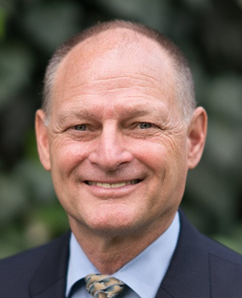Guest column: California's comprehensive approach for oil and gas wells
California has long been a global leader in traditional oil and gas production, creating the energy we need under the strictest environmental, public health, and safety standards in the world.
But the Golden State’s environmental commitments do not end at production: Governor Gavin Newsom, the Legislature, and the California Geologic Energy Management Division (CalGEM) are working to develop a comprehensive set of regulations to strengthen oversight of idle and orphan oil and gas wells.
Recently, the governor strengthened his commitment to fund CalGEM by allocating $100 million to the division for the 2023-24 fiscal year for decommissioning orphan wells and facilities. CalGEM has also increased its staff by 40%, creating 125 new positions in the last three years to help implement the state’s new policy changes.
Further, state policymakers are working to implement elements of the federal Bipartisan Infrastructure Law, which allocated a total of $4.7 billion to address orphaned oil and gas wells, a known challenge across the nation. California is eligible for $61 million in the first phase of federal funding, with an additional $61 million in coming years.
In total, more than $354 million in state and federal funding is dedicated to CalGEM’s orphan well programs. This is on top of the substantial fees paid by California’s oil and gas producers to ensure the protection of public health, safety, and the environment. Those fees are based on a percentage charged for every barrel produced in California, which pays the entire operating costs of the division, including funds to plug and decommission wells that are not currently managed by a fiscally responsible operator.
Two important recent statutes, authored by Central Coast legislators, have gone a long way toward protecting California taxpayers from the potential liabilities of decommissioning oil and gas infrastructure. Assembly Bill 1057 gives CalGEM additional authority to require producers to post a security bond or alternative financial assurances of up to $30 million to cover the cost of remediating their wells and facilities.
Senate Bill 551 requires oil and gas producers to give CalGEM an analysis of the costs to plug idle and orphan wells to make sure the industry’s estimates of decommissioning liability are up to date and accurate.
These two bills, combined with other recent statutes to strengthen the regulation of California’s oil and gas production infrastructure, are helping to ensure a safe and sustainable industry that is essential to California’s energy stability and future energy transitions to a lower carbon future.
Just last month, CalGEM proposed spending roughly $80 million in state and federal funds to plug 378 wells, directing 40% of the funds to be spent in disadvantaged communities. In addition, the division is actively issuing permits to plug idle wells. In 2022, 9,664 permits were issued to plug idle wells and, so far in 2023, 4,555 permits have been issued. These are indicators of an active and committed program.
This is why we have offered testimony in recent months that Ventura County’s efforts to preempt state programs for idle and orphan wells are duplicative, unnecessary, and premature. The Department of Conservation has long recognized that the economic realities of California’s oil and gas production will drive changes in ownership and asset retirement.
As long as 10 years ago, as director of that department, I had discussions with Governor Brown’s office and the legislature about increasing the bonding and spending authority of the division to more effectively protect the public from the financial risks of a changing industry. Thankfully, based in part on strong Central Coast legislative efforts, we were successful in passing important bills to increase the division’s funding and spending authority for idle well management and plugging orphan wells.
CalGEM, the governor, and the Legislature are quickly making California a national leader on idle and orphan well management. We should let them continue their good work.

Dr. Mark Nechodom is the Senior Director for Upstream Strategy for the Western States Petroleum Association. He was the former director of the California Department of Conservation under Governor Jerry Brown (2012-2015), Deputy Director of the Montana State Department of Agriculture under Governor Bullock, and senior scientist and policy advisor at the U.S. Department of Agriculture in the Bush and Obama administrations.
This article originally appeared on Ventura County Star: Guest column: California's comprehensive approach for oil and gas wells
